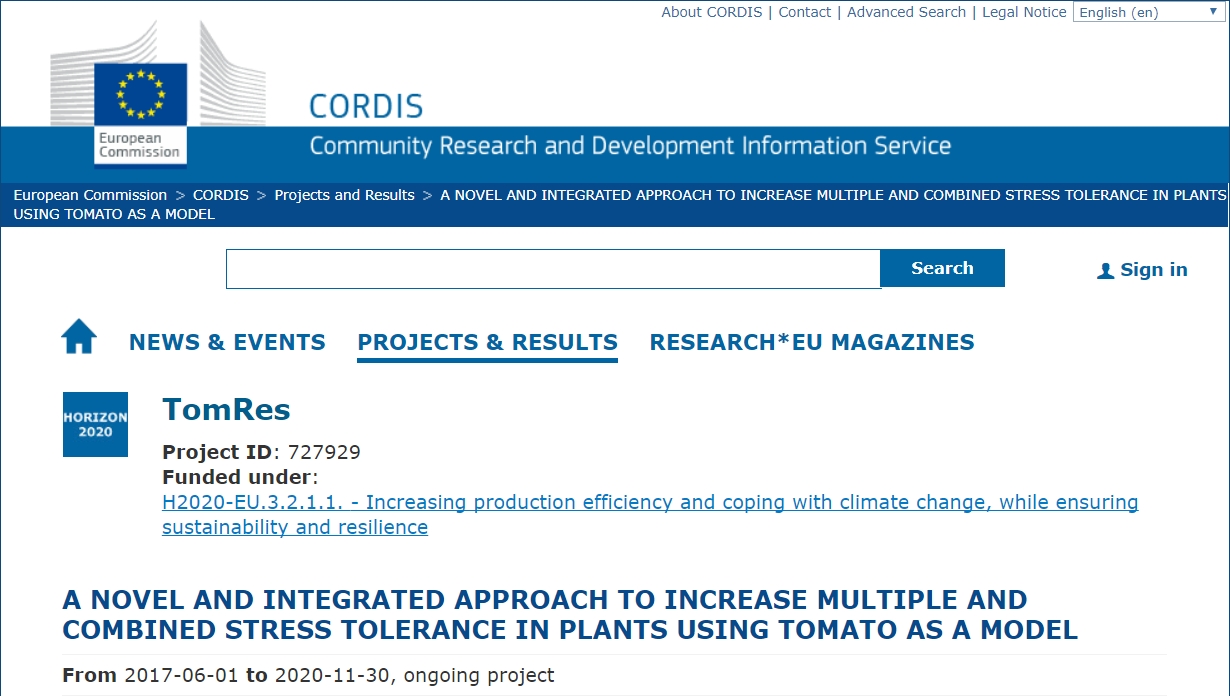Respect for your privacy is our priority
The cookie is a small information file stored in your browser each time you visit our web page.Cookies are useful because they record the history of your activity on our web page. Thus, when you return to the page, it identifies you and configures its content based on your browsing habits, your identity and your preferences.
You may accept cookies or refuse, block or delete cookies, at your convenience. To do this, you can choose from one of the options available on this window or even and if necessary, by configuring your browser.
If you refuse cookies, we can not guarantee the proper functioning of the various features of our web page.
For more information, please read the COOKIES INFORMATION section on our web page.


 The European project TOMRES (a new and integrated approach to improve multiple and combined stress tolerance using tomato plants as a model), funded with six million Euro by the European Union through the Horizon 2020 program, seeks to improve the resistance of tomato plants to water and nutrient stress, optimising the efficiency in the use of water and nutrients in the context of climate change.
The European project TOMRES (a new and integrated approach to improve multiple and combined stress tolerance using tomato plants as a model), funded with six million Euro by the European Union through the Horizon 2020 program, seeks to improve the resistance of tomato plants to water and nutrient stress, optimising the efficiency in the use of water and nutrients in the context of climate change. Steve Loewen, a tomato breeder from Guelph, explains that the current varieties of processing tomatoes do not fare well in temperatures above 32°C. He explained that the impact that extreme heat has on the tomatoes depends on the time of year it occurs. For example, high heat exposure early in the season when the plant is flowering may prevent it from producing fruit. But if it happens later in the season, only the colour of the tomato will be affected, he said.
Steve Loewen, a tomato breeder from Guelph, explains that the current varieties of processing tomatoes do not fare well in temperatures above 32°C. He explained that the impact that extreme heat has on the tomatoes depends on the time of year it occurs. For example, high heat exposure early in the season when the plant is flowering may prevent it from producing fruit. But if it happens later in the season, only the colour of the tomato will be affected, he said.



























